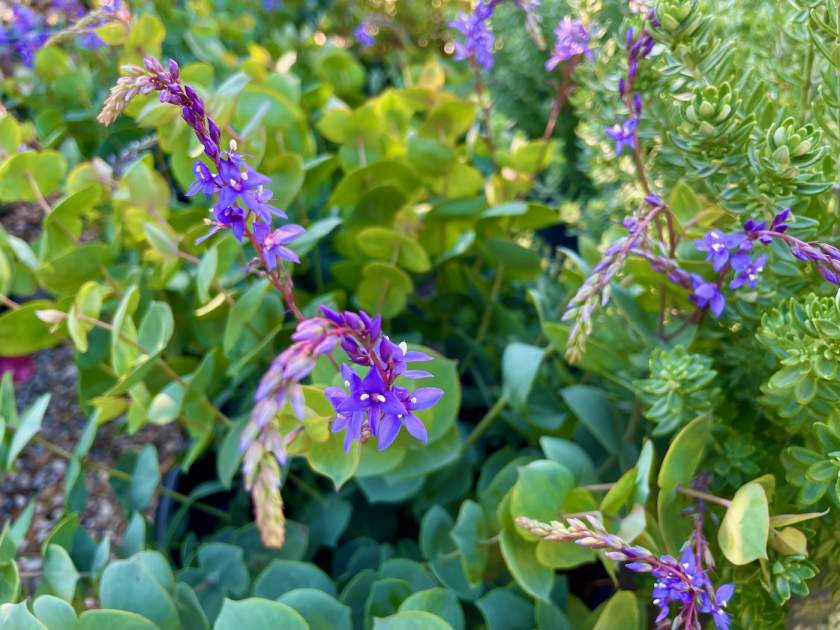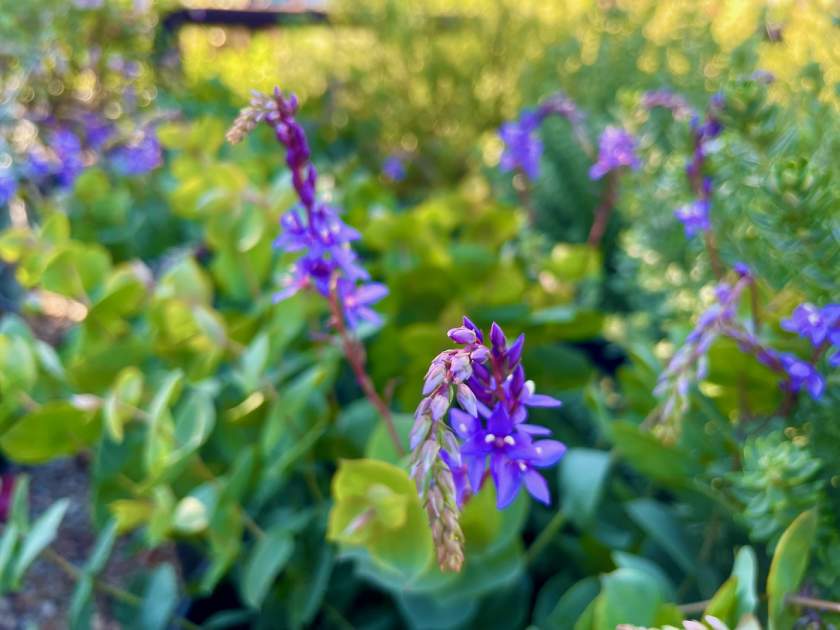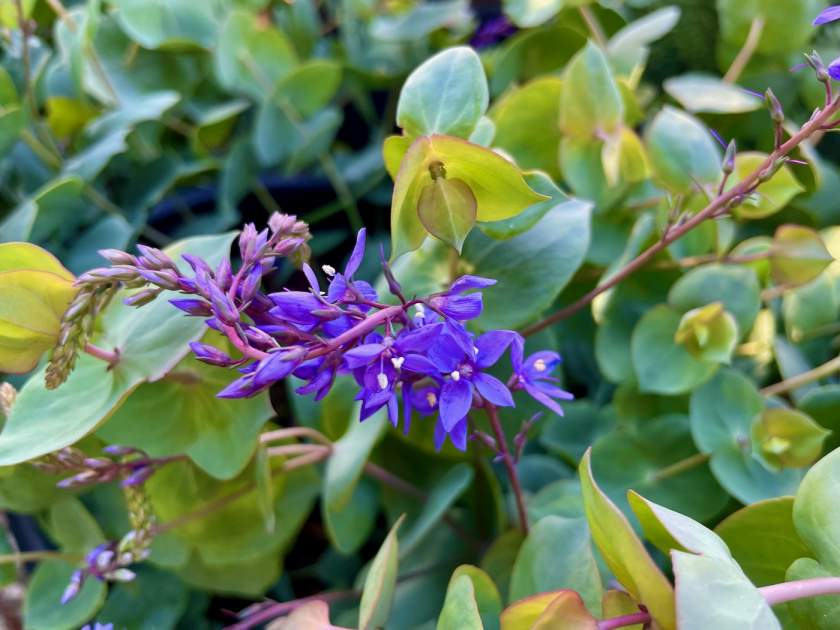Veronica perfoliata: A Versatile Beauty with Many Names
Veronica perfoliata, also known as Parahebe perfoliata or Derwentia perfoliata, has gone through an intriguing journey of classification, but the current and widely accepted name for this charming plant is Veronica perfoliata. Over time, it has been classified under three different genera: Parahebe, created by botanist Robert Brown in 1810, Derwentia, introduced by botanist Ferdinand von Mueller in 1853, and Veronica, established by the renowned botanist Carl Linnaeus in 1753.
Now, it proudly finds its place in the family Plantaginaceae, formerly under Scrophulariaceae, becoming part of a vast family with around 100 genera and approximately 1900 species worldwide. The family’s diversity spans across the globe, from the northern to the southern hemispheres, and Australia boasts around 140 species and 22 genera. Occupying various habitats, from aquatic to dryland, Plantaginaceae thrives in temperate regions, including the temperate, arid, and tropical zones of Australia, showcasing its adaptability and resilience.
Veronica perfoliata: Thriving in Australian Landscapes
With its main distribution in New South Wales, Australia Capital Territory, and Victoria, Veronica perfoliata is a perennial shrub closely related to D. arenaria and V. derwentiana. This charming sub-shrub boasts semi-woody stems, adorned with evergreen foliage featuring rounded blue-grey leaves that elegantly clasp the stems in opposite pairs, adding to its allure as a foliage plant. The ovate leaves, stem-clasping and measuring up to 5 cm long, offer a handsome appearance to this vibrant species. As summer sets in, nodding sprays of bright blue flowers grace the plant, captivating all who behold its beauty.
Cultivation:
Sunlight Requirements: Veronica perfoliata thrives in full sun to part shade, making it adaptable to a variety of garden settings. Provide it with at least 6 hours of direct sunlight per day for optimal flowering.
Watering: This resilient beauty appreciates regular watering, especially during the summer months. Water the plant deeply whenever the top inch of the soil feels dry. In the winter, reduce watering to avoid over-saturation.
Soil: Veronica perfoliata prefers well-drained soil that is slightly acidic. Ensuring proper drainage is essential for its health, as waterlogged soil can lead to root rot.
Pest and Disease Management: Veronica perfoliata is relatively resistant to pests and diseases. However, occasional monitoring can help detect and address any issues promptly.
Propagation: Propagation of Veronica perfoliata can be achieved through cuttings or by dividing the rootstock. Both methods have proven successful in creating new plants.
Pruning: After the flowering period, consider removing old stems to improve the plant’s appearance and promote new growth.

The Enchanting Charm of Veronica perfoliata
Veronica perfoliata exudes an enchanting charm that captivates gardeners and nature enthusiasts alike. Its graceful arching habit and low-growing nature make it an excellent addition to various landscape styles, from rockeries to gravel gardens. Though it may experience some winter dieback in severe climates, it resprouts from its roots, showcasing its resilience and adaptability. Gardeners appreciate its drought resistance and the ease with which it can be cultivated.
Unraveling the Perennial Beauty
With its glaucous leaves and delicate light lavender-blue flowers, Veronica perfoliata‘s beauty continues to amaze gardeners and nature lovers. Standing at a modest height of 18 inches, this perennial herb is a unique and endemic treasure of Tasmania, closely related to Hebes. Its evergreen bluish-green leaves lend a touch of elegance to any garden, and the soft periwinkle lilac flower spikes that bloom in mid-summer add a splash of color to the landscape for weeks. Full sun and well-drained soil create an ideal setting for this perennial to thrive.
An Enduring Beauty
Originating from Australia, Veronica perfoliata has earned its place as a beloved garden plant, admired for its evergreen foliage, blue flowers, and adaptability. In a mild, coastal climate, its evergreen leaves bear a striking resemblance to those of a eucalyptus, adding an exotic touch to the landscape. Although it possesses the charm of a groundcover, it tends to spread underground, making it a delightful surprise for gardeners. This low-growing perennial demonstrates its resilience by enduring drought once it establishes itself. With its undeniable allure, it continues to entice and enchant gardeners across the globe, leaving a trail of delightful blue flowers that inspire awe and admiration.
In Conclusion
Veronica perfoliata, or the captivating Parahebe perfoliata or Derwentia perfoliata, stands tall among the floral wonders of the Australian landscape. Adaptable, elegant, and evergreen, this perennial herb graces gardens with its enchanting blue flowers and graceful arching habit. Its versatility and resilience make it a favorite among gardeners, while its unique names and botanical history add to its allure. Embrace the beauty of Veronica perfoliata in your garden and revel in the magic of this enduring botanical treasure.





